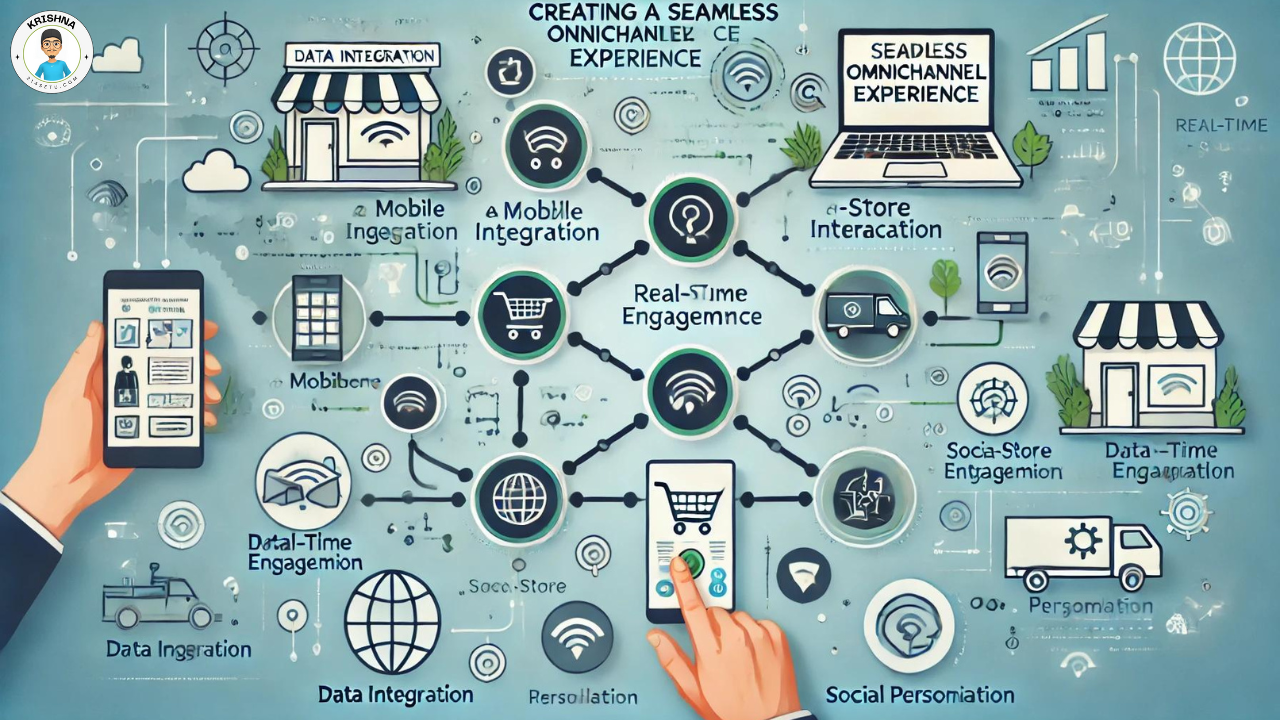
Did you know that 73% of consumers prefer to shop through multiple channels? This highlights the importance of delivering a seamless omnichannel experience. Omnichannel marketing is no longer a luxury but a necessity for digital marketers looking to meet modern consumer expectations. In this post, we will explore practical strategies and best practices for creating a seamless omnichannel experience.
Understanding Omnichannel Experience
Definition
An omnichannel experience integrates all customer touchpoints to provide a consistent, unified journey across various channels, including online, mobile, in-store, and social media.
Importance
An omnichannel approach is crucial for meeting customer expectations and improving engagement. It ensures that customers receive a consistent experience regardless of how they interact with your brand, which can significantly enhance satisfaction and loyalty.
Current Trends
Consumer behaviors, such as the increasing use of mobile devices for shopping and the demand for personalized experiences, are driving the need for robust omnichannel strategies.
Key Components of an Omnichannel Strategy
Unified Customer Data
Collecting and unifying customer data across all channels is essential for creating a comprehensive view of each customer. This enables personalized and consistent interactions.
Consistent Messaging
Consistent messaging and branding across all touchpoints ensure a cohesive customer experience. Whether customers are interacting via email, social media, or in-store, the messaging should align seamlessly.
Integrated Technology
Integrated technology solutions, such as Customer Relationship Management (CRM) systems and marketing automation platforms, are vital for supporting omnichannel strategies. These tools help manage customer data, automate marketing processes, and ensure a unified approach.
Best Practices for Creating a Seamless Omnichannel Experience
Customer-Centric Approach
Put the customer at the center of all marketing efforts. Focus on understanding their journey and tailoring your strategies to enhance their experience.
Personalization
Leverage customer data to personalize interactions and content. Personalized experiences resonate more with customers and drive higher engagement.
Cross-Channel Integration
Ensure smooth integration and transition between different channels. For example, a customer should be able to start a purchase on a mobile device and complete it in-store without any friction.
Real-Time Engagement
Real-time engagement is key to addressing customer needs promptly. Utilize tools and platforms that allow for immediate responses to customer interactions.
Feedback and Adaptation
Regularly gather customer feedback to understand their preferences and pain points. Use this feedback to continuously adapt and improve your omnichannel strategies.
Leveraging Technology for Omnichannel Success
Customer Data Platforms (CDPs)
CDPs help unify customer data from various sources, providing a single view of the customer. This comprehensive data is crucial for personalized marketing efforts.
Marketing Automation
Marketing automation tools enable consistent and timely communication across channels. They help in executing complex marketing campaigns with precision and efficiency.
Analytics and Reporting
Analytics tools are essential for measuring the effectiveness of omnichannel strategies. Use these tools to track key metrics, gain insights, and make data-driven decisions.
Case Studies and Examples
Successful Brands
- Starbucks: Their loyalty program seamlessly integrates online and offline experiences, allowing customers to earn and redeem rewards across channels.
- Nike: Uses a combination of mobile apps, website, and in-store experiences to provide a cohesive shopping journey.
Results and Impact
Brands that have successfully implemented omnichannel strategies often see increased customer satisfaction, higher engagement rates, and improved sales performance.
Conclusion
Recap
Creating a seamless omnichannel experience involves unifying customer data, ensuring consistent messaging, integrating technology, and personalizing interactions. These strategies help improve customer engagement and satisfaction.
Call to Action
Start developing your omnichannel strategy today to enhance customer experiences and engagement. Leverage the best practices discussed to create a cohesive and unified customer journey.
Future Outlook
The future of omnichannel marketing looks promising, with continuous advancements in technology and changing consumer behaviors. Staying ahead of these trends will be key to maintaining a competitive edge.
FAQs
- What is an omnichannel experience?
- An omnichannel experience is a unified and seamless customer journey across all touchpoints and channels.
- Why is an omnichannel strategy important?
- It meets customer expectations, improves engagement, and enhances overall customer satisfaction.
- How can I create a seamless omnichannel experience?
- By unifying customer data, ensuring consistent messaging, integrating technology, personalizing interactions, and leveraging real-time engagement.

